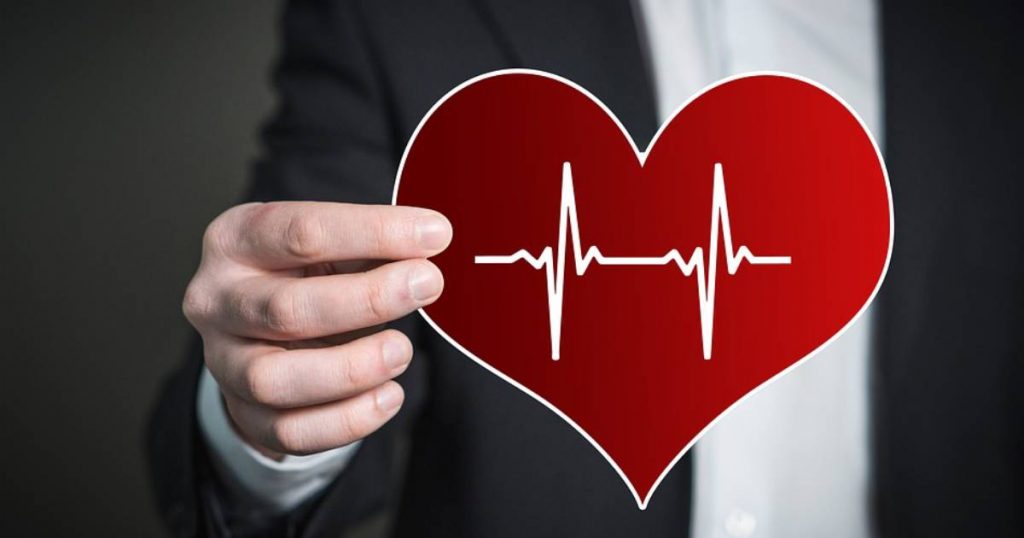Nobody organ has as much emotional appeal as the heart. The heart does react to emotions; an adrenaline rush of excitement makes it beat faster! But in its functional behavior, it is a simple mechanical pump which works nonstop without a pause. Our heart beats 100,000 times a day, circulating 5000 gallons of blood throughout our body every 24 hours. It delivers oxygen- and nutrient-rich blood to our tissues and carries away waste. Nothing exemplifies the spirit of life more than the heart; simple, perpetual, vulnerable and unpredictable.
Heart’s Basic Anatomy
The heart is a muscular organ that is placed slightly to the left center of the chest and is about the size of your closed fist. It is divided into two halves; the right and the left which are further divided into two chambers, the Atria and the Ventricle. The right side receives blood from the body and pumps it into the lungs for oxygenation and the left side receives this oxygen-rich blood and pumps it into the body. Thus the blood supply of the body is a closed loop with the lung and the heart as intermediaries. The most important thing the blood supplies to the whole body is oxygen and we need this continuously for survival. A few minutes of disruption in this supply means the difference between life and death.
Basic Heart Functions
The heart muscles, guarded by valves, work in a synchronized fashion. They relax to receive blood and contract to propel blood into the body. The contraction can be felt in the arteries of the body, called the pulse. This is what the doctor tries to feel when he holds your wrists. This contraction is also what produces the blood pressure. We all know that there is an upper and a lower value to the blood pressure. The pressure produced by contraction of the left side produces the Systolic Pressure and the pressure remaining in this chamber during relaxation is the Diastolic Pressure. All this happens very silently in our body, we neither feel the contraction nor the vibration. If the heart beats fast, as after exercise or due to an abnormal rhythm, we can sense our own heart beating. This is called palpitation and in the absence of exercise or exertion could be an indicator of cardiac disease.
Coronary Arteries and their role in Heart’s Health
The heart muscles require a continuous supply of blood themselves which they cannot obtain from the blood contained in its chambers. This blood has to be supplied by a set of arteries called the Coronary arteries, so called because they wrap the heart like a crown. A block in these vessels is the major cause of cardiac disease, called Coronary Artery Disease in women. The coronaries arise from the Aorta and have been divided into three main vessels which supply different areas of the heart with some overlap. Patency and good flow through these vessels are crucial to cardiac function. In our lifetime, the process ofAtherosclerosis (disease of the arteries that occur due to deposition of fatty material on its inner walls) causes occlusion of the vessels from inside, decreasing their caliber and reducing the supply of blood and oxygen to the cardiac muscles. Atherosclerosis to some extent can be considered an aging process but it becomes accelerated in those who are prone to cardiac disease. The risk factors for atherosclerosis are diabetes, hypertension, smoking, abnormal heartbeat, and family history.
Causes of Heart Disease Symptoms
When the supply of oxygen falls below a critical level, there is chest pain. This is felt like tightness, heaviness over the center of the chest and the pain may be felt elsewhere, between the jaw above and the umbilicus below. Women and those with diabetes are more likely to have atypical chest pain. Some people may only complain of fatigue, tiredness, gaseousness, and dizziness. The pain generally comes on activity and is relieved by rest. During the activity, as during running, the oxygen demand of the cardiac muscles increases. This mismatch between supply and need for oxygen causes heart disease symptoms.
Detecting the Symptoms
Thus anybody who exercises regularly can appreciate cardiac symptoms earlier. The same principle is used in TMT where a patient exercises on a jogging track at various speed and incline and ECG changes are noted in this stressful state. Symptoms and ECG changes are pointers to congenital heart disease and an Echocardiography may provide more information by showing cardiac contractions in real time.
Preventing Heart Disease
- Quit smoking
- Exercise regularly, about 30 minutes a day at least three days a week
- Eat a heart-healthy diet. Low-sodium (salt), low-cholesterol and low-fat foods may help
- Manage Stress
- Maintain a healthy weight
- Get enough sleep
- Get regular heart health check-ups/screenings including regular diabetes check-up/screening
In a Nutshell
To sum it up, our heart is the most powerful organ in the body and is one of the finest engineering feats of nature. Our heart never pauses and constantly pumps vital nutrients and oxygen around our body.
Enroll in our comprehensive healthy health packages to lead a heart-healthy life!


















